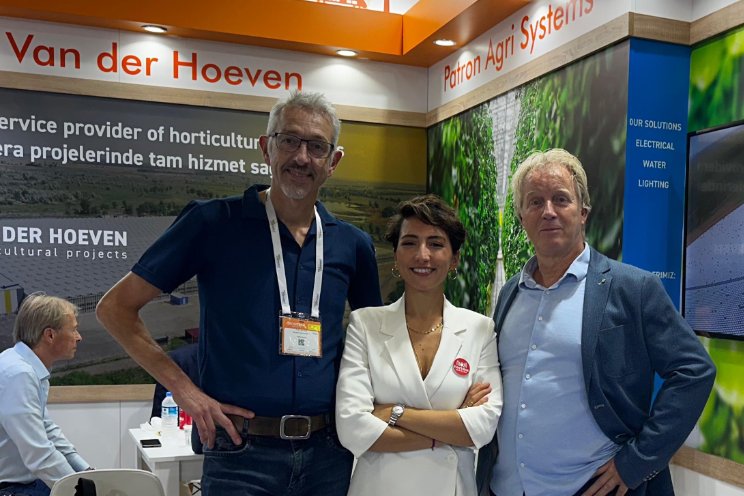'Water shortage will force Turkish growers to reuse'
Added on 22 November 2024

“Disinfecting the drain water so you can reuse it in cultivation is not yet a standard in Turkey. As a result, much of the water is discharged after watering. Growers also quickly lose a third of their fertilizer as a result,” says technician Philip Eekma of Patron Agri Systems. This specialist in sustainable irrigation and control systems is part of greenhouse company Van der Hoeven, both based in the Netherlands.
“Just by saving on fertilizers alone, you could recoup a disinfection system in 2 to 2.5 years,” according to the technician. But the most pressing reason for recirculation is to save on water. Levels in underground wells are getting lower every year, due to lower precipitation amounts and higher consumption. Both population growth and horticulture growth contribute to this.
“There is no tradition of water reuse in Turkish horticulture and unfamiliarity with available modern techniques is still high. Yet you do see recycling, especially in the larger horticultural projects. Awareness that water scarcity needs to be addressed is also growing here,” says Eekma. “There is more talk about it, but not yet more investment in it,” he observes. He does expect the Turkish government to make recirculation and disinfection mandatory in the coming years, as it becomes a necessity.
UV disinfection
Patron Agri Systems offers various technical systems for disinfecting drain water. The applied techniques range from UV systems, Ultrafiltration, reverse osmosis and filters.
A suitable solution for the Turkish market is the Apollo disinfection unit, which works on the basis of UV disinfection. “This unit can either run autonomously or be controlled via any climate computer imaginable with a silo management application. The return water is collected and directed to the 'dirty drain silo.' There it is cleaned with UV light, possibly with the addition of hydrogen peroxide,” Eekma explains.
During this process, all viruses and bacteria are killed off. Then the cleaned water goes to the clean water unit, where it is mixed with fresh water and is again suitable for application in the crop. “In this water, fertilizers are still present, about a third of what was dosed. The fertilizers are mixed back in after which the water is again ready as irrigation water.”
Written by Koen van Wijk
More news















